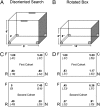Evidence from an emerging sign language reveals that language supports spatial cognition
- PMID: 20616088
- PMCID: PMC2901441
- DOI: 10.1073/pnas.0914044107
Evidence from an emerging sign language reveals that language supports spatial cognition
Abstract
Although spatial language and spatial cognition covary over development and across languages, determining the causal direction of this relationship presents a challenge. Here we show that mature human spatial cognition depends on the acquisition of specific aspects of spatial language. We tested two cohorts of deaf signers who acquired an emerging sign language in Nicaragua at the same age but during different time periods: the first cohort of signers acquired the language in its infancy, and 10 y later the second cohort of signers acquired the language in a more complex form. We found that the second-cohort signers, now in their 20s, used more consistent spatial language than the first-cohort signers, now in their 30s. Correspondingly, they outperformed the first cohort in spatially guided searches, both when they were disoriented and when an array was rotated. Consistent linguistic marking of left-right relations correlated with search performance under disorientation, whereas consistent marking of ground information correlated with search in rotated arrays. Human spatial cognition therefore is modulated by the acquisition of a rich language.
Conflict of interest statement
The authors declare no conflict of interest.
Figures


References
-
- Hermer-Vazquez L, Spelke E-S, Katsnelson A-S. Sources of flexibility in human cognition: Dual-task studies of space and language. Cognit Psychol. 1999;39:3–36. - PubMed
-
- Hermer L, Spelke E-S. A geometric process for spatial reorientation in young children. Nature. 1994;370:57–59. - PubMed
-
- Bowerman M, Choi S. In: Language Acquisition and Conceptual Development. Bowerman M, Levinson S-C, editors. Cambridge, UK: Cambridge University Press; 2001. pp. 475–511.
-
- Levinson S-C. Space in Language and Cognition: Explorations in Cognitive Diversity. Cambridge, UK: Cambridge University Press; 2003.
-
- Majid A, Bowerman M, Kita S, Haun D-B, Levinson S-C. Can language restructure cognition? The case for space. Trends Cogn Sci. 2004;8:108–114. - PubMed
Publication types
MeSH terms
Grants and funding
LinkOut - more resources
Full Text Sources
Other Literature Sources
Medical

